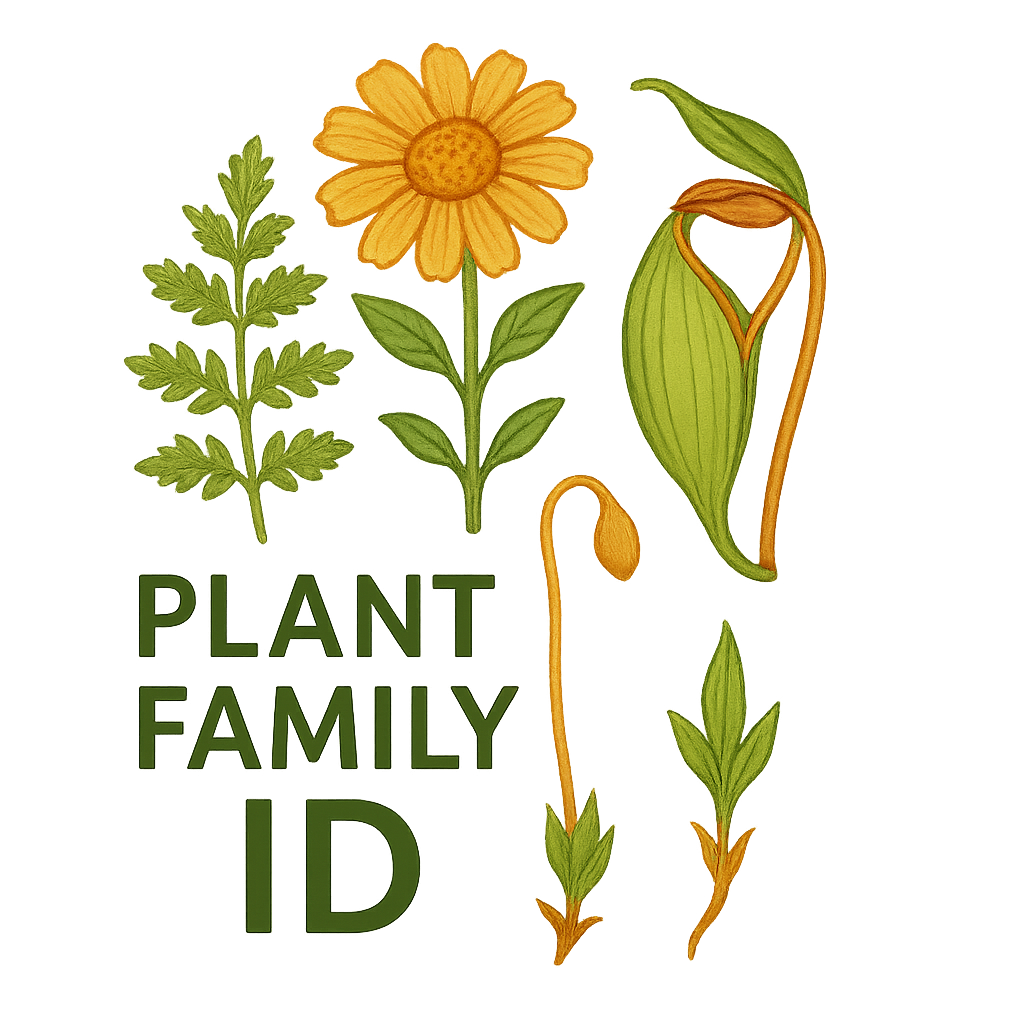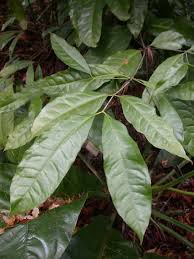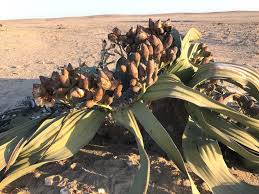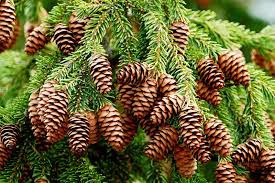Ephedraceae
Joint-fir Family
The Ephedraceae is a family of gymnosperms in the order Gnetales, containing the single genus Ephedra. These plants, commonly known as joint-firs or Mormon tea, are typically shrubs or vines adapted to arid and semi-arid regions worldwide. They are characterized by their jointed, photosynthetic stems and highly reduced, scale-like leaves. Unlike flowering plants (Angiosperms), they reproduce via cones (strobili).
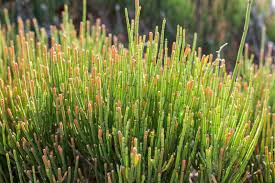
Overview
The Ephedraceae family includes about 40-70 species within the single genus Ephedra. These unique gymnosperms are distributed across dry regions of North and South America, southern Europe, northern Africa, and central to eastern Asia. They often inhabit deserts, grasslands, and rocky slopes.
Ephedra species are well-adapted to drought, with their primary photosynthetic activity occurring in the green stems rather than the minute, scale-like leaves. The stems are distinctly jointed, giving rise to the common name "joint-fir." Most species are dioecious, meaning male and female reproductive structures (cones) are borne on separate plants.
Several Ephedra species have a long history of human use. Some, like North American species, have been used to make teas (Mormon tea). Others, particularly Asian species like Ephedra sinica (Ma Huang), are sources of the alkaloids ephedrine and pseudoephedrine, which have medicinal applications (e.g., as decongestants and stimulants) but also potential for misuse.
Quick Facts
- Scientific Name: Ephedraceae Dumort.
- Common Name: Joint-fir Family, Mormon Tea Family
- Number of Genera: 1 (Ephedra)
- Number of Species: Approximately 40-70
- Distribution: Arid/semi-arid regions of N. & S. America, Europe, Africa, Asia
- Evolutionary Group: Gymnosperms - Gnetophytes - Gnetales
- Key Feature: Gymnosperms with jointed green stems, highly reduced scale-like leaves, and reproduction via cones (strobili).
Key Characteristics
Growth Form and Habit
Members of Ephedraceae are typically much-branched shrubs, sometimes scrambling or vine-like, or rarely small trees. They possess a distinctive structure with jointed stems.
Stems
Stems are green (at least when young), photosynthetic, longitudinally ribbed or grooved, and conspicuously jointed (articulated) at the nodes. Branching occurs primarily at these nodes.
Leaves
Leaves are highly reduced to small scales, arranged oppositely or in whorls of three at the nodes. They are often fused at the base to form a sheath around the stem and are typically non-photosynthetic and wither quickly, though their bases may persist.
Reproductive Structures (Cones/Strobili)
Ephedra species are gymnosperms and lack true flowers. They reproduce via cones (strobili), and are usually dioecious (separate male and female plants).
- Male Cones (Microstrobili): Compound cones consisting of several pairs of bracts, each subtending a smaller male strobilus. Each male strobilus has 2 bracteoles and a microsporangiophore bearing 2-8(+) microsporangia (pollen sacs).
- Female Cones (Megastrobili): Compound cones consisting of several pairs of bracts (usually 2-4 pairs). The uppermost pair(s) subtend one or two ovules. Each ovule is enclosed by an integument that extends into a long, tubular micropylar tube, and is further surrounded by a fleshy "perianth-like" envelope derived from bracteoles.
Seeds
Fertilized ovules develop into seeds. At maturity, the subtending bracts of the female cone often become fleshy, succulent, and brightly colored (red, orange, or yellow), resembling a berry-like structure that aids in dispersal by animals. However, this is not a true fruit (which develops from an ovary). The seed itself contains an embryo and nutritive tissue.
Chemical Characteristics
Many species, particularly Asian and some European ones, contain alkaloids such as ephedrine and pseudoephedrine. North American species generally lack significant amounts of these specific alkaloids but contain other compounds.
Field Identification
Identifying Ephedra species relies heavily on their unique vegetative features and reproductive structures:
Primary Identification Features
- Jointed Stems: The most obvious feature is the presence of distinctly jointed, usually green, photosynthetic stems.
- Reduced Leaves: Look for tiny, scale-like leaves arranged oppositely or in whorls of three at the nodes (joints).
- Habit: Typically shrubs or sometimes vines found in arid or semi-arid environments.
- Cones (Strobili): Presence of small, often inconspicuous male or female cones clustered at the nodes, rather than flowers.
- Fleshy Bracts (Female): Mature female cones often have fleshy, brightly colored bracts surrounding the seed(s).
Secondary Identification Features
- Stem Texture: Stems are often rough due to longitudinal ridges.
- Dioecious Nature: Male and female cones are usually found on separate plants.
- Habitat: Characteristic of dry, rocky, sandy, or desert environments.
Seasonal Identification Tips
- Year-round: The jointed stems and scale leaves are identifiable throughout the year.
- Spring/Summer: Look for the small male (pollen-producing) or female (ovule-bearing) cones at the nodes.
- Late Summer/Fall: Mature female cones with fleshy, colored bracts (if present in the species) are most conspicuous.
Common Confusion Points
While distinctive, Ephedra might be superficially confused with:
- Horsetails (Equisetum): Also have jointed, ribbed, photosynthetic stems and reduced leaves in whorls. However, Equisetum are spore-bearing plants (not seed plants) and reproduce via terminal spore cones (strobili) that look very different from Ephedra cones. They prefer moister habitats.
- Leafless Brooms (e.g., some Fabaceae like Spartium, or Asparagus spp.): Some flowering plants have green stems and reduced leaves, but they lack the distinctly jointed stems of Ephedra and produce true flowers and fruits.
- Casuarinaceae (She-oaks): Have jointed, photosynthetic stems (cladodes) and reduced scale-like leaves, but these are flowering plants (Angiosperms) with different reproductive structures (small flower clusters, woody cone-like fruits).
Field Guide Quick Reference
Look For:
- Jointed, green, photosynthetic stems
- Reduced scale-like leaves (opp/whorled) at nodes
- Shrub or vine habit
- Arid/semi-arid habitat
- Small cones (strobili) at nodes
- Fleshy, colored bracts around seeds (mature female)
Key Distinctions:
- Gymnosperm (cones, not flowers/fruits)
- Jointed stems (vs. most brooms)
- Seed cones (vs. spore cones of Equisetum)
- Scale leaves (vs. needles of pines)
Notable Examples
Several species of Ephedra are well-known either ecologically or for their human uses:

Ephedra viridis
Green Mormon Tea
A common shrub in the arid regions of the southwestern United States. Characterized by its bright green, erect stems and opposite scale leaves. Traditionally used by Native Americans and settlers to make a tea.

Ephedra nevadensis
Nevada Ephedra
Another common species in the deserts of the western United States, often growing alongside E. viridis. It typically has grayer-green, more divergent stems compared to E. viridis.

Ephedra sinica
Ma Huang
An Asian species native to China and Mongolia. It is the primary source of the alkaloids ephedrine and pseudoephedrine and has been used in traditional Chinese medicine for millennia. Its use is now regulated in many countries.
Phylogeny and Classification
Ephedraceae belongs to the order Gnetales, which is one of the four major groups of living gymnosperms (along with conifers, cycads, and Ginkgo). The Gnetales also includes two other highly distinct families: Gnetaceae (genus Gnetum - mostly tropical vines and trees with broad leaves) and Welwitschiaceae (containing only Welwitschia mirabilis - a bizarre desert plant with two continuously growing leaves).
The phylogenetic position of the Gnetales relative to other seed plants has been long debated. Morphological similarities (like vessel elements in wood, double fertilization features) once suggested a close link to angiosperms (Anthophyte hypothesis). However, most molecular data now place Gnetales either closer to conifers (often sister to Pinaceae - GnePine hypothesis) or potentially as sister to all other extant seed plants. Regardless of the exact placement, Ephedraceae and its relatives represent a unique and ancient lineage of seed plants.
Position in Plant Phylogeny
- Kingdom: Plantae
- Clade: Tracheophytes (Vascular plants)
- Clade: Spermatophytes (Seed plants)
- Clade: Gymnosperms
- Order: Gnetales
- Family: Ephedraceae
Evolutionary Significance
Ephedraceae and the Gnetales are crucial for understanding seed plant evolution:
- Gymnosperm Diversity: Represents one of the four distinct lineages of modern gymnosperms.
- Morphological Convergence: Shows some features superficially similar to angiosperms (vessels, double fertilization aspects, fleshy bracts mimicking fruits), raising questions about evolutionary history and convergence.
- Adaptation to Aridity: Provides excellent examples of adaptations to dry environments (reduced leaves, stem photosynthesis).
- Phylogenetic Puzzle: The uncertain relationship of Gnetales to other seed plants continues to be a major area of research in plant evolution.
